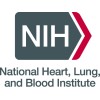
Stem Cell Study for Patients With Heart Disease
Chest PainMyocardial Ischemia3 moreThe purpose of this study is to determine if cell therapy with your own cells (autologous cells) delivered with a catheter to regions of the heart with poor blood flow will be safe and if it will relieve your chest pain and/or your ability to exercise.

Dietary Approaches to Stop Hypertension (DASH)
Cardiovascular DiseasesHeart Diseases2 moreTo test the effectiveness of dietary patterns in lowering blood pressure.

Coronary Artery Surgery Study (CASS)
Cardiovascular DiseasesCoronary Disease2 moreTo compare coronary artery surgery with medical management in patients with coronary artery disease and to maintain a registry on all patients undergoing coronary arteriography, whether operatively or medically managed.

Systolic Hypertension in the Elderly Program (SHEP) (Pilot Study)
Cardiovascular DiseasesHeart Diseases2 moreThe SHEP Pilot Study had six objectives, each designed to develop and test critical components of a full scale trial directed at the health consequences of treating isolated systolic hypertension (ISH) in the elderly. l. To estimate and compare the yield of participants for randomization into a clinical trial from various community groups using various recruitment techniques. 2. To estimate compliance with the visit schedule and to the prescribed double-blind regimens. 3. To estimate and compare the effectiveness of specified antihypertensive medications in reducing the blood pressure. 4. To estimate and compare the unwanted effects of specified antihypertensive medication in an elderly population. 5. To evaluate the feasibility and effectiveness of periodic behavioral assessment in this population. 6. To develop and test methods of ascertaining stroke and other disease endpoints.

Potassium and Sodium to Control Blood Pressure in Hypertensives
Cardiovascular DiseasesHeart Diseases2 moreTo examine the role of dietary sodium reduction with and without potassium supplementation in controlling blood pressure in hypertensive men.

Polyunsaturates and KCL to Control Mild Hypertension
Cardiovascular DiseasesHeart Diseases2 moreTo test the efficacy of omega-3 fatty acids in untreated mild hypertensives and magnesium, calcium, and potassium supplementation supplementation in non-hypertensives. These clinical trials were conducted in sequence over a four year period.

Trial of Antihypertensive Intervention Management
Cardiovascular DiseasesHeart Diseases2 moreThe objective of the Trial of Antihypertensive Intervention Management (TAIM) was to determine the efficacy of dietary management and/or drug therapy, namely thiazide-like diuretics or a beta-blocker, in the control of mild hypertension. Additionally, the Continuation of the Trial of Antihypertensive Intervention Management (COTAIM) tested the effects of long-term weight reduction, and sodium/potassium changes added to weight reduction, as well as the original drug treatment, on the failure rate of blood pressure control.

GeoHealth: Geographic Information System for Health Management and Clinical, Epidemiological and...
AsthmaAllergy3 moreThe objective of the project is to develop a potentially marketable system for clinical, epidemiological and translational research capable of associating contextual variables and geospatial data with clinical patient information. The GeoHealth system will include a section to perform exploratory analysis that will help identify risk factors to optimize clinical decision making. The system will be used in a study of the influence of environmental factors in more than 800,000 asthmatic patients in the region of Andalucía, Spain. The results of this study will help to develop predictive models of risk of exacerbation in asthma patients. Currently, disease management guidelines state that asthma control has two components: current disease control and future risk of exacerbations. These two components are key when assessing disease management, following a stepwise model that seeks to improve current control and minimize future risk. However, although the current control of the disease is defined and has established methodologies for its measurement (Asthma Control Test -ACT- and Asthma Control Questionnaire -ACQ-), the risk of suffering exacerbations is not yet a measurable component. Therefore, these predictive models could help in professional decision making for asthmatic patients. The predictive models will be validated prospectively and implemented in a decision support system for the management of asthmatic patients.

Acute Safety, Deliverability and Efficacy of the Medtronic Resolute Integrity™ Zotarolimus-Eluting...
Ischemic Heart DiseaseCardiovascular Diseases2 moreThe purpose of this study is to conduct a prospective, multi-center, single arm, non-randomized evaluation of acute outcomes in Chinese subjects, including those eligible for percutaneous transluminal coronary angioplasty (PTCA) with a reference vessel diameter of 2.25 mm to 4.0 mm, with the Medtronic Resolute Integrity™ Zotarolimus-Eluting Coronary Stent System.

Evaluation of Coagulation Testing in Patients Undergoing Cardiac Surgery
Congenital Heart DiseaseNeonates, children with single ventricle congenital heart disease, and those undergoing multiple complex cardiac surgeries are at high risk of increased perioperative blood loss, and blood product transfusions. In addition, some of these patients will present an increased risk of postoperative thromboembolic complications. For a long time, bleeding management has been based on the empiric administration of different blood products (e.g. platelet concentrates, cryoprecipitates, and/or activated factor VII), topical hemostatic agents, and surgical manipulation. Recently, the use of viscoelastic tests (e.g. thromboelastography (TEG) or thromboelastometry (ROTEM)) increased, and allowed a better assessment of perioperative coagulopathy, and a more 'rational' treatment of bleeding. While TEG and ROTEM record the viscoelastic properties of whole blood by measuring mechanical impedance and related changes during clot formation, T2MR, a miniaturized, magnetic resonance-based diagnostic platform, measures how water molecules react in the presence of magnetic fields to evaluate a broad range of hemostasis measurements. In this study, we will prospectively collect demographic data, surgical characteristics, the amount of perioperative bleeding and blood product transfusion, results of laboratory assays, and postoperative outcomes (30-day follow-up or until discharge), with the aim to assess our current practice, and develop an algorithm-based approach for the administration of targeted blood product and pro-coagulant therapies. Our goals are: the reduction of blood product utilization, the reduction of the incidence of massive bleeding and postoperative thrombosis.
